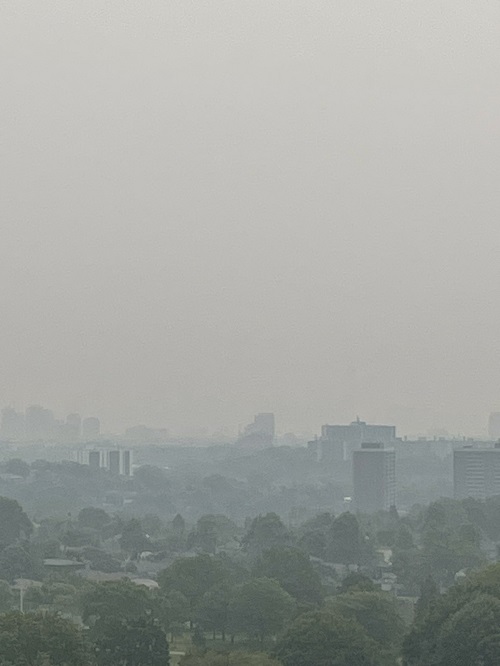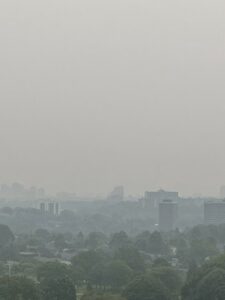Toronto under a blanket of smoke: the city into the world’s worst air quality “top ten”
TORONTO – Hundreds of fires, many of them out of control, and smoke everywhere. Canada is in full emergency and the alarm does not spare the GTA, where air quality will not improve at least until tomorrow.
Many measures have already been taken at various levels: for example, the Toronto District School Board has canceled outdoor activities in schools and moved recreation indoors, while the Toronto Zoo has announced its early closure.
After all, it is the Environment Canada meteorological agency that encourages citizens to limit outdoor activities or to avoid them altogether, especially people who are vulnerable to smoking. And we’re seeing masks again outdoors: today, many people decided to wear them, to avoid breathing directly the “smoky” air that has brought Toronto, these days, into the world’s worst air quality “top ten” cities.
Meanwhile, the federal government – which “woke up” late – is moving to deal with the emergency: on Wednesday, Prime Minister Justin Trudeau spoke on the phone with the president of the United States, Joe Biden, and both leaders agreed that “the situation underscores the urgency of tackling climate change”. A situation that is unprecedented: as of Wednesday afternoon, the Canadian Interagency Forest Fire Center database noted 440 fires in nine provinces and two territories, more than half of which are considered out of control. The amount of land burned surpassed 40,000 square kilometers on Wednesday, making the 2023 fire season the fourth worst on record before summer officially kicked off. At the current rate of burn, the all-time record should be surpassed within the next week.
There was no loss of life, but the damage to property and infrastructure is significant: in Quebec, some hydroelectric towers are at risk; on Vancouver Island, a fire cut off the only major highway connecting Port Alberni, Tofino and Ucluelet to the rest of British Columbia; in Nova Scotia, the Tantallon fire destroyed 151 homes and the Barrington Lake fire damaged at least 60. Quebec is facing the toughest challenge right now, with 163 fires in progress, 117 of which are outside control: a situation never seen in the French-speaking province.
In Ontario the situation is no better: there are 54 active fires (29 out of control: today’s data) and they are creating problems and inconveniences such as in Subdury, where it was necessary to issue an evacuation order for the surrounding area the stake (located north of Madaweson Lake).
The mobilization is massive across the country: more than 500 soldiers and military specialists have been deployed in Alberta, Quebec and Nova Scotia since Wednesday, along with equipment including water bombers and various aircraft; nearly 1,000 international firefighters from the United States, South Africa, Australia and New Zealand arrived in Canada to help, with another 109 sent from France (but only to Quebec).
The pic above was posted on Twitter by Steph E. Paesano (@GogglesPaesan0) who wrote: “Toronto smells like campfire. Smoke is bellowing over from another province. On a normal day, we can see the CN Tower…”




